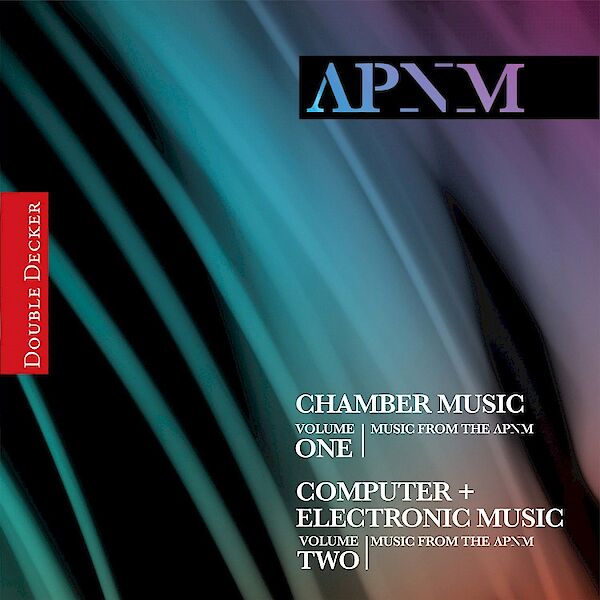
- Home
- Discography
- Music from the Association for the Promotion of New Music (APNM), vol. 1 & 2
Music from the Association for the Promotion of New Music (APNM), vol. 1 & 2

- Home
- Discography
- Music from the Association for the Promotion of New Music (APNM), vol. 1 & 2
Music from the Association for the Promotion of New Music (APNM), vol. 1 & 2
The Association for the Promotion of New Music (APNM) was founded in 1975 by Jacques-Louis Monod as a community of American composers with shared aesthetic values. This double album release features acoustic, electro-acoustic, and purely electronic works by their member composers and celebrates the organization’s more than four decades long commitment to composers spanning different generations and aesthetic approaches.
The opening work, Wind Chimes for pipa and guitar, is by current secretary of the APNM, Stephen Dydo. Its modal orientation is a nod to Chinese traditional music, specifically music from the earlier Tang and Song dynasties, when compositions exploring multiple modes were the norm. In Dydo’s work, the guitar and pipa inhabit different modes at different times, creating a work that discovers a modern sensibility from a traditional source of inspiration.
Laurie San Martin’s Elective Affinities, heard here in a performance by the Lydian String Quartet with Korean gayaguem player Yi-Ji Young, also looks to the East. Martin treats the quartet as one large hybrid instrument and counterpart to the gayaguem. The piece alternates between gayaguem passages exploring its sonic characteristics and vigorous ensemble sections, leading through an elegant dance to close in a halo of harmonics.
Thomas James’ Odd Numbers for solo piano was written for his wife Sheila Simpson, who is heard in this performance. The title refers to the odd numbers James used to derive aggregates which shape the rhythmic and pitch organization in the work. The work gives the sense of an internal deliberation, a lyrical consideration of options, implications, and consequences.
– D. Lippel
Read more at New Focus Recordings
Listen
Included Works
- Dydo: Wind Chimes (2000)
Artists
Cheng Yu, pipa, Stephen Dydo, guitarLydian String Quartet, Yi Ji-young, gayageum
Sheila Simpson, piano
Elaine Barkin, midi
Washington Square Chamber Music Society, Louis Karchin, conductor
Steven Beck, piano, Joseph Hudson, electronics
Arthur Kreiger, electronics
Joel Gressel, electronics
Maurice Wright, electronics
Victor Lowrie, viola, Nina C. Young, electronics
Jeffrey Hall, electronics
Sam Wells, trumpet and electronics
Hubert Howe, electronics